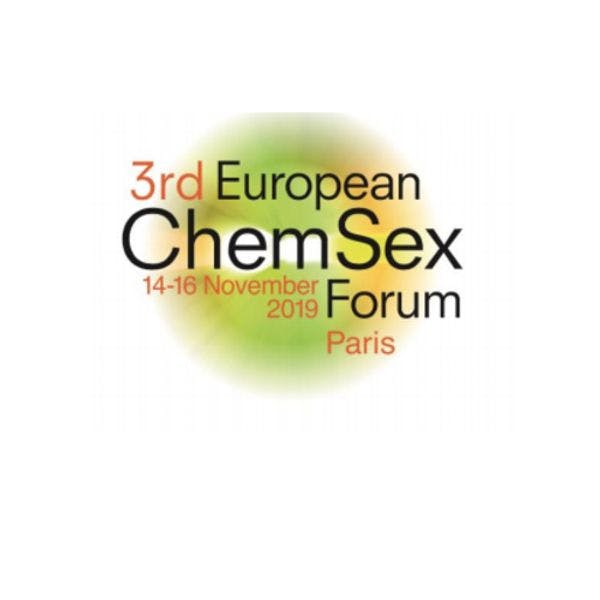European Chemsex Forum report
By International HIV Partnerships
Building on the previous two European Chemsex Forums, the third European Chemsex Forum took place on 14-26 November 2019 in Paris. The Forum aimed to provide participants with the tools to develop and improve multi-sectoral responses appropriate to their settings and provide a platform to engage in international, multi-disciplinary dialogue and discussions around chemsex. Chemsex was defined as the use of specific drugs ("Chems") in sexual contexts by gay, bisexual, men who have sex with men and trans* people.
The Forum programme focused on 3 key work areas:
- The pursuit of sexual pleasure and the right to health
- Multi-sectoral responses at local level and adaptation of services to respond to needs
- Harm reduction strategies and support for chemsexers
The Forum started with an evening plenary session and was followed by two full days of presentations and discussions, with Day One looking at data and evidence across Europe and Day Two focusing on the community response to chemsex. The film ParTy Boi: Black Diamonds in Ice Castles was presented by director Micheal Rice on Friday the 15th of November.
220 people registered, 193 were able to participate in the Forum over three days, bringing together chemsex veterans, chemsex responders, healthcare providers, researchers, therapists, policy makers, service providers and service users from 23 countries.
Some clear guiding principles emerged from the 3rd Forum:
- Forum participants asserted that people engaged in chemsex and chemsex responders need to be included in all intersectoral approaches. Time and again presentations called for more integration of people-centred approaches where people engaged in chemsex and chemsex responders themselves are welcomed into collaborations, across sectors and services, with other key decision-makers in their locales.
- In some locations, community-based organisations (like LGBTQ+ and HIV organisations) and/or broader social structures (like city government), institutions (like the police) or services (like drugs services) have been seen to be underperforming or stigmatising regarding chemsex response. This report also presents instances of excellent collaborations, which DO provide integrated services. These are models that can be shared in different locales for your local work.
- While there was attention at the Forum to issues amongst migrants, racial and ethnic minorities, sex workers and trans people, too often it was to note the work not yet done or lacking the proper capacity to be done well. It is essential for people aiming to provide health and social services, as well as organisations representing these underrepresented populations, to work with those engaged in chemsex and chemsex responders. We need cooperation and inclusive strategies to address issues related to problematic chemsex.
- We’re not just addressing chemsex in our response; we’re addressing our environments in which some people with needs and talents are provided with resources and succeed while others are denied resources and fail. At the Forum, Bernard Kelly cited Montserrat Guibernau, a Spanish politician, who identified five dimensions of belonging: psychological, territorial, cultural, political and historical. In the last 20 years, Bernard stated, the gay community had retreated from many of these dimensions. His comments chime with recent research by John Pachankis at Yale which focuses on gay community stress as an additional stigma source (alongside social stigma, institutional stigma and self-stigma) contributing to high rates of suicide, depression, anxiety and substance misuse in LGBTQ+ populations.
- This community stress leads directly to the need for increased attention to the dynamics amongst people engaged in chemsex. A number of presentations noted a lack of agreed understanding of harm, play, consent, and responsibility which showed that education was needed around the notions of self-empowerment and boundaries, the right to self-determination and the ability to say “no”’.
